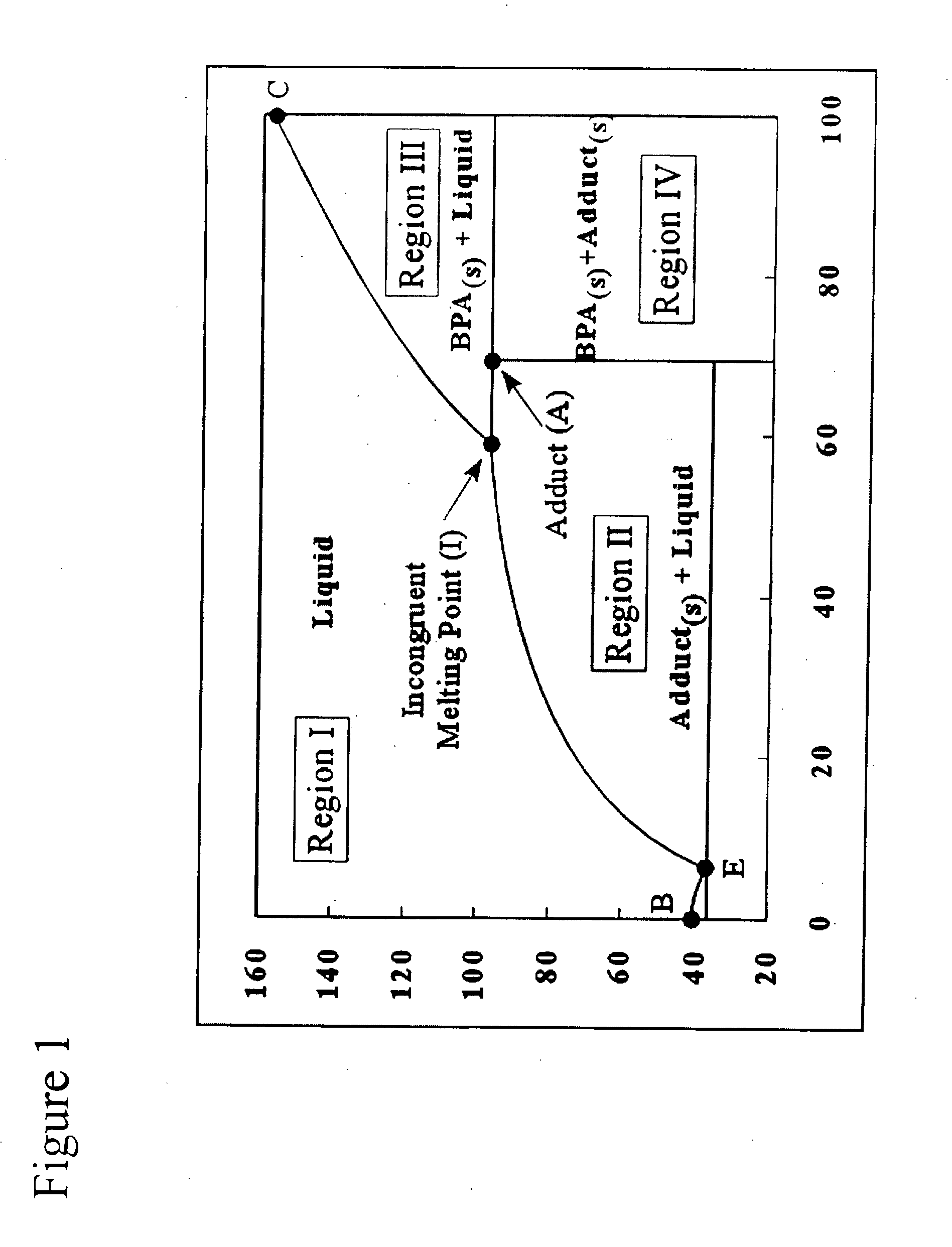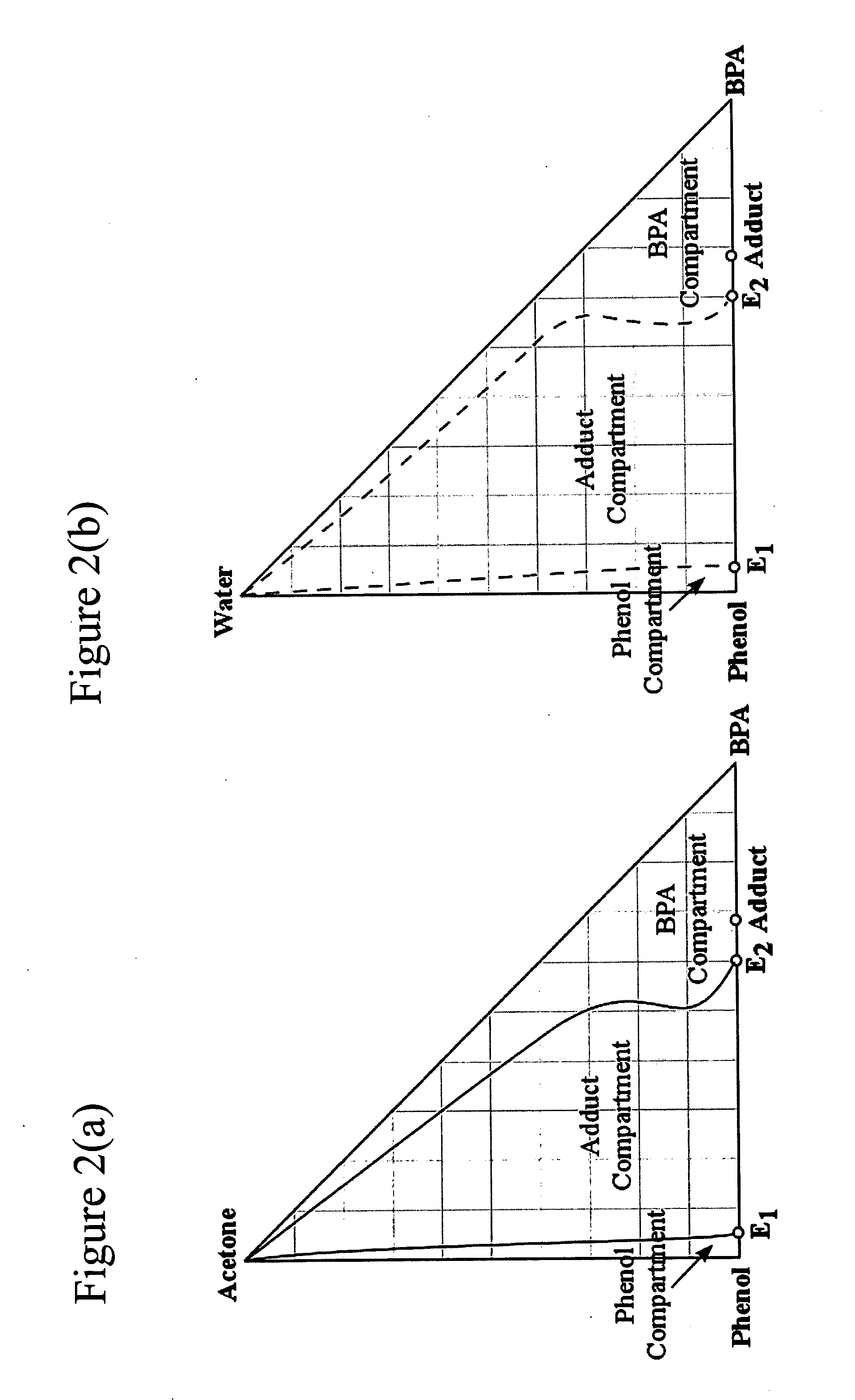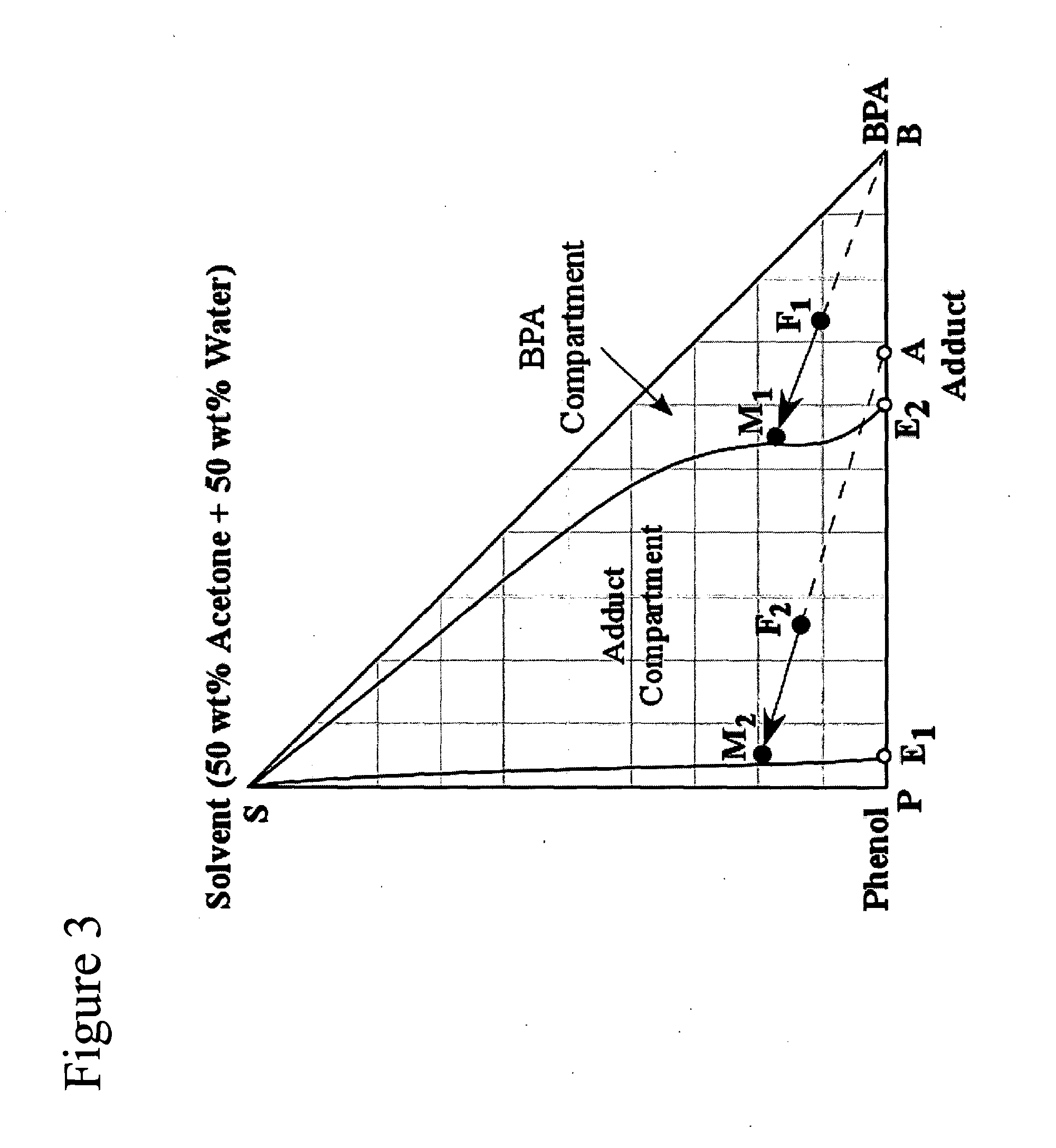System and method of producing bisphenol-A (BPA) using two stage crystallization
a technology of bisphenol-a and crystallization, applied in the field of system and method of production of bisphenol-a (bpa), can solve the problems of reducing the overall vaporization of phenol and reducing energy consumption
- Summary
- Abstract
- Description
- Claims
- Application Information
AI Technical Summary
Benefits of technology
Problems solved by technology
Method used
Image
Examples
example 1
For the simulated experiments, the following design basis was used: 70,000 MTA Bisphenol-A (9,112 kg / hr); Acetone conversion in the condensation reaction of Phenol with Acetone is about 88.5%; Phenol to Acetone feed molar ratio to the condensation reactor is 10; Bisphenol-A mass recovery from adduct crystallizer is about 70%; and Bisphenol-A recovery from the Bisphenol-A crystallizer is about 30%.
In one example, the system units are as follows: The condensation reactor is a fixed type reactor having a size of about 200 M3 at a flow rate of about 77 M3 / hr. The condensation reaction is carried out at a temperature of about 75° C., and at a reaction pressure of about 4.4 bar.
In this example, the adduct crystallizer is a circulating Magma Crystallizer with draft-tube-baffle (DTB), having a size of about 150 M3 and receives a flow rate of about 84 M3 / hr. The crystallizer is at a temperature of about 51° C. to achieve of Bisphenol-A recovery of about 70%. The temperature can be lower...
example 2
Simulated examples showing typical stream compositions for the major solution streams are provided, corresponding to the present invention as shown in FIG. 6, using two crystallizer stages, the adduct crystallizer stage (Cryst. 1) and the Bisphenol-A crystallizer stage (Cryst. 2). Solution stream compositions for the key process streams—reactor feed and outlet streams, and the crystallizer feed and mother liquor (M / L) streams—are shown in Table 1 below and are in wt %, on an impurity free basis. Note, that impurities are typically present at the inlet and outlet of the reactor, however they are considered to be minimal. Examples of typical impurities, include but are not limited to: by-products such as 2,4-Bisphenol-A, trisphenol, chromans, IPP dimers, and other higher condensation products. In this example, the solvent is comprised of a mixture of two solvent components; namely, Acetone which is a good solvent for Bisphenol-A, and Water which is a poor solvent for Bisphenol-A. The...
example 3
The solution stream compositions shown in the previous example are for a chosen set of operating parameters. In practice, the process has a number of process operating variables, or “handles” which can be changed to vary the process performance. Markedly different process stream compositions can be obtained when the same process is carried out with a different choice of the process handles. For the the process configuration depicted in FIG. 6 the process handles include, but are not limited to: the amount of catalyst in the reactor unit 18; the flow velocity of the reactants through the reactor unit; the Phenol to Acetone ratio at the reactor inlet; the fraction of Solvent recovered by the solvent recovery unit 40; the relative fraction of recovered solvent recycled to the adduct crystallizer 22, the dissolver 28, and the BPA wash unit 32; the fraction of Phenol removed by the solvent recovery unit 40; and the operation temperature, the cooling rate, or the evaporation rate in the ...
PUM
| Property | Measurement | Unit |
|---|---|---|
| temperature | aaaaa | aaaaa |
| temperature | aaaaa | aaaaa |
| temperature | aaaaa | aaaaa |
Abstract
Description
Claims
Application Information
 Login to View More
Login to View More - R&D
- Intellectual Property
- Life Sciences
- Materials
- Tech Scout
- Unparalleled Data Quality
- Higher Quality Content
- 60% Fewer Hallucinations
Browse by: Latest US Patents, China's latest patents, Technical Efficacy Thesaurus, Application Domain, Technology Topic, Popular Technical Reports.
© 2025 PatSnap. All rights reserved.Legal|Privacy policy|Modern Slavery Act Transparency Statement|Sitemap|About US| Contact US: help@patsnap.com



